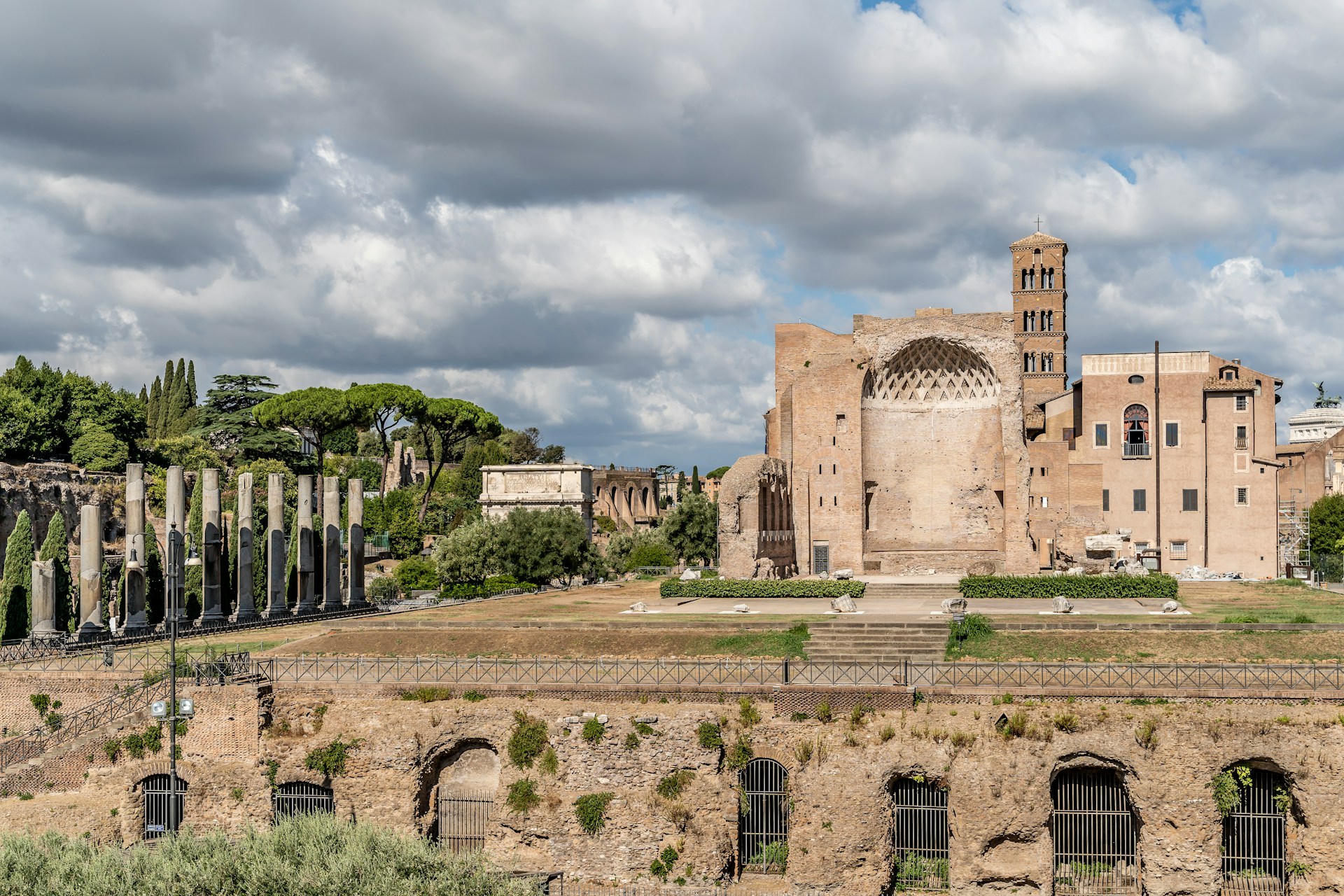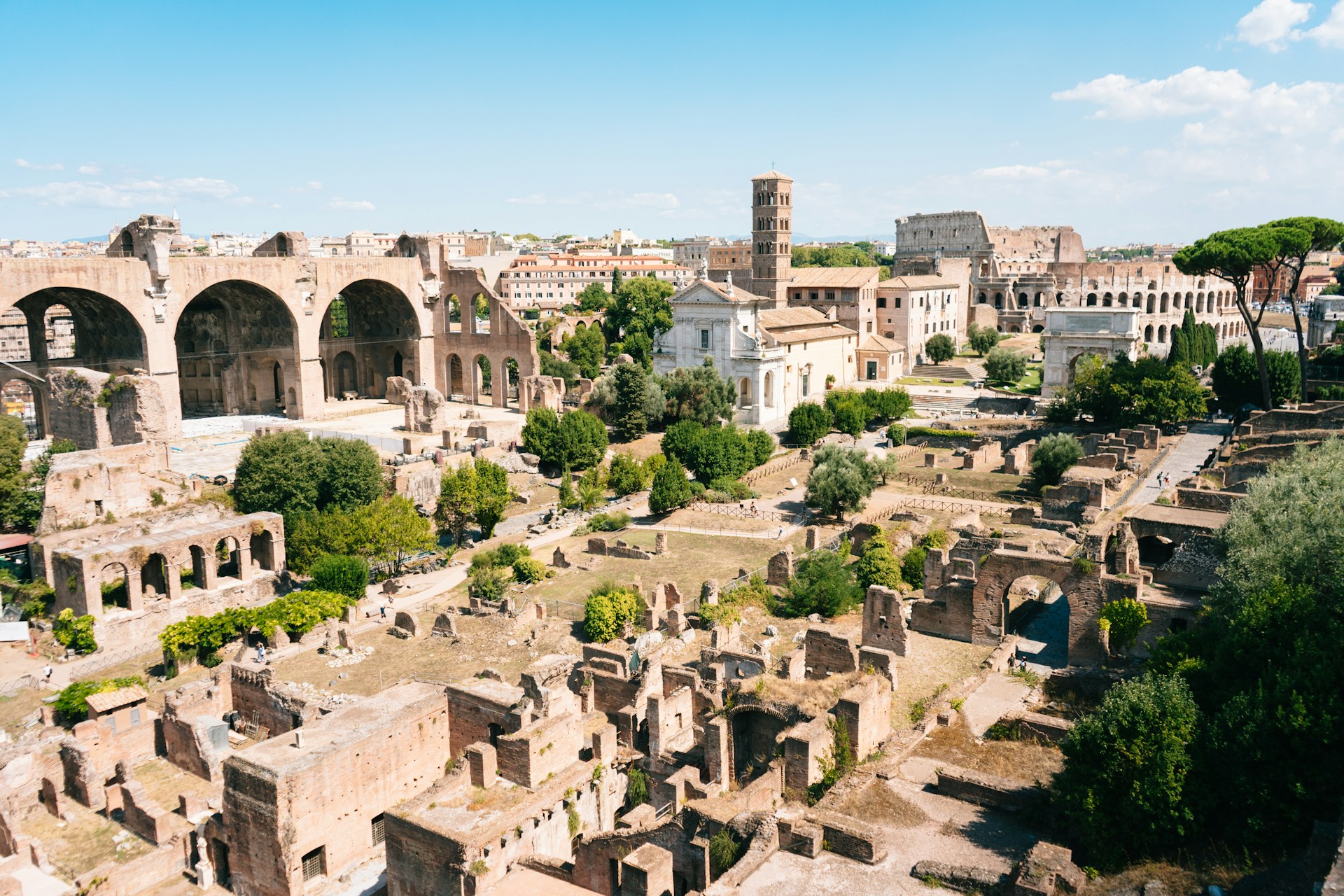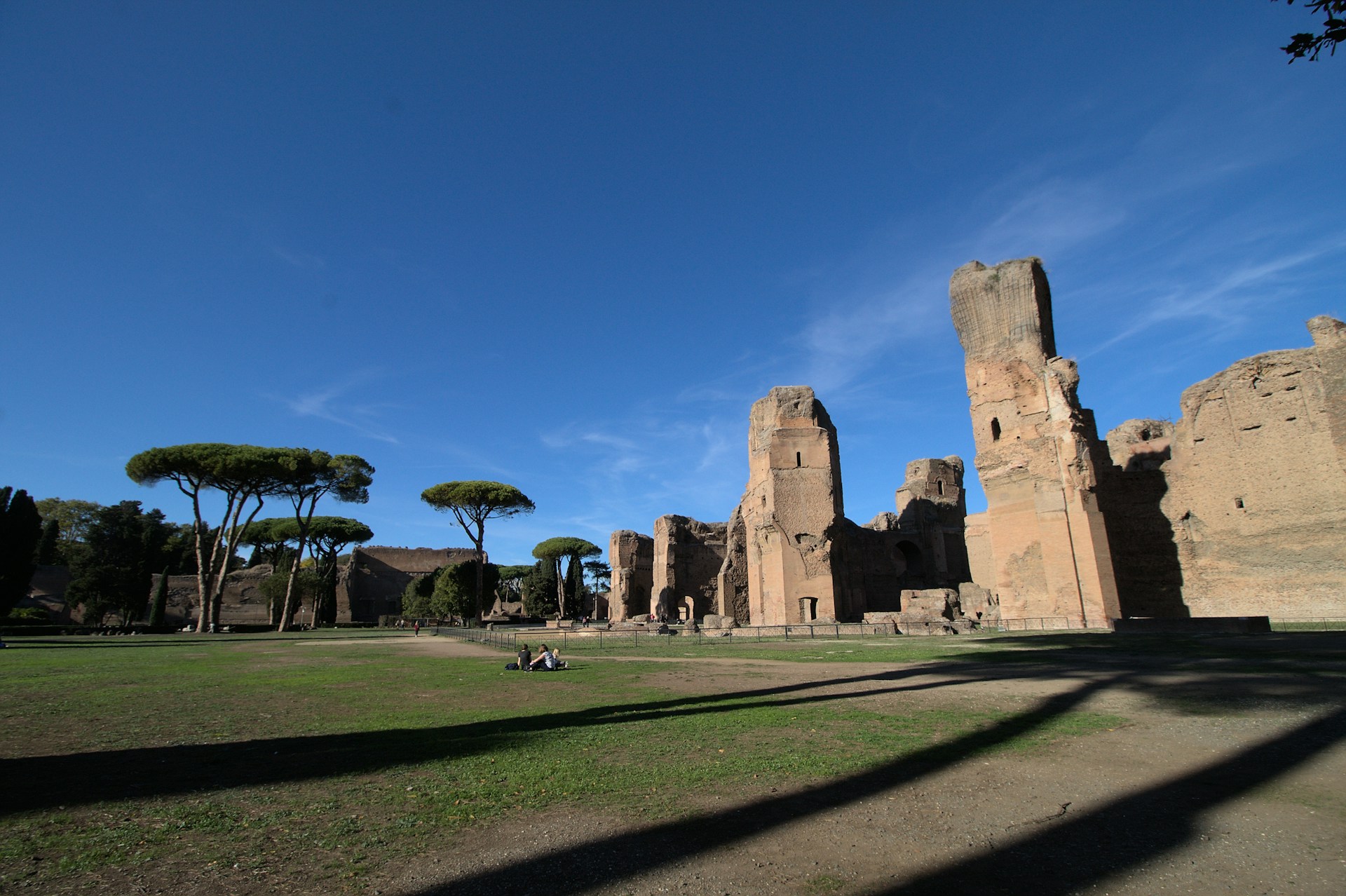Culture & Travel
20 October 2024Rome, which once hosted one of the most powerful empires in history, feels like a city where time has stood still, bearing the marks of every era.
From the moment you set foot in Rome, it feels as though the doors to the ancient world swing wide open before you. The Colosseum is, of course, the most iconic and grand example of this ancient wealth, but Rome’s treasures extend far beyond the Colosseum alone.
Today, we’re embarking on a delightful journey through the ancient riches of Rome.
The Colosseum: The Most Majestic of Arenas

Let’s start with the Colosseum, one of Rome’s most recognizable landmarks. Construction began under Emperor Vespasian in 72 AD, and it was completed by his son Titus in 80 AD. For those with a passion for history and architecture, it’s often the first stop in the city. The Colosseum hails from a time when entertainment and spectacle reached their peak in Ancient Rome, and with a capacity of over 50,000 spectators, it stands as a symbol of the engineering and architectural prowess of its era.
Reflecting both the might of the Roman Empire and the people’s love of entertainment, the Colosseum was once the stage for grand events such as gladiator fights, animal hunts, and mock naval battles.
With its oval design, the arena allowed spectators to easily view the action from every corner. The four-tiered structure reserved the uppermost level for ordinary citizens and slaves, while senators and nobles sat in the lower levels. Beneath the Colosseum, a network of tunnels and chambers housed gladiators and wild animals waiting to enter the arena.
These battles served as a form of propaganda, celebrating the victories and conquests of the Roman Empire. Today, when you visit the Colosseum, you come face to face with Rome’s grandeur and its brutal spirit. As you wander through its towering stone walls, the essence of ancient Rome is almost palpable.
Palatine Hill: The Birthplace of Rome

One of the seven hills of Rome, Palatine Hill is notable for its mythological significance. It is said to be the birthplace of Rome’s legendary founders, Romulus and Remus. Romulus is believed to have founded the city here, which would later become the heart of the Roman Empire.
As you stroll through Palatine Hill today, you’ll uncover clues to the lives of emperors and elites who once called this area home. The House of Augustus, the first Roman emperor, and the Palace of Domitian are just some of the key sites that showcase Rome’s architectural elegance.
Palatine Hill, with its historic ruins and natural beauty, offers more than just history buffs a reason to visit. From its summit, you’re treated to breathtaking views of the Roman Forum and the Colosseum, turning your time here into both a historical and visual feast.
Roman Forum: The Heart of the Ancient World

If you were to ask where the social, political, and economic heart of Ancient Rome lay, the answer would be the Roman Forum. Once the center of city life, it was the hub of the most important buildings and events during the Imperial era.
The Forum was a meeting place for the city’s leaders and citizens, a marketplace, a site for religious ceremonies, and a venue for celebrating key events. As you explore the Forum today, magnificent structures and ruins greet you. Buildings like the Senate House, where political decisions were made, the Temple of Vesta, reflecting the religious life of the Romans, and triumphal arches like the Arch of Titus tell the stories of military victories and daily life in ancient Rome.
Pantheon: The House of the Gods

The Pantheon, one of the best-preserved ancient buildings in Rome, is renowned for its architectural splendor and historical importance. Built in 126 AD by Emperor Hadrian as a temple dedicated to all gods, the Pantheon is a testament to the architectural mastery of ancient Rome.
In ancient times, it served as a place of worship for Rome’s gods. Its most striking feature is its massive domed interior, and today, it functions as a church. Inside, you’ll also find the tombs of prominent Italian artists and kings. Visiting the Pantheon is not only about admiring a grand building but also witnessing Rome’s rich history and cultural legacy.
The Baths of Caracalla: Traces of Ancient Luxury

Rome is known not only for its temples and arenas but also for its grand bath complexes. The Baths of Caracalla, built in 216 AD, were among the most luxurious and impressive social spaces of ancient Rome. Featuring hot and cold pools and even sports areas, they were where Romans came to relax and socialize.
Via Appia: The Road to Rome
One of the oldest roads in the world, the Via Appia is a must-see for those wishing to explore Rome’s ancient riches. Constructed in 312 BC, it connected Rome to southern Italy and became a vital artery of trade. Today, you can walk along Via Appia and visit the ancient tombs, aqueducts, and churches that line this historic route.
Imperial Palaces: Pinnacles of Grandeur
Rome’s imperial palaces formed a vast complex of buildings on Palatine Hill. The emperors who lived here enjoyed luxurious residences that symbolized the political and military power of the empire. The Palace of Domitian and the House of Augustus are among the most impressive structures, offering a glimpse into the opulent lives of ancient royalty.



